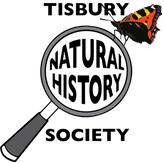|
Sarah Barnsley, of the People’s Trust for Endangered Species, (PTES) presented a talk on 16th February entitled ‘Why Hedgerows matter’.
Sarah talked about some of the wildlife that lives in hedges, illustrated with beautiful slides, and how it is beneficial for them to cut hedges as late in the winter as soil conditions allow, to preserve the fruits as long as possible. She followed on to describe different hedgerow structures which result from different management practices, and how ideally the hedge will have a blended edge of scrub leading further out to long grass. Hedges can be assessed as to how healthy they are, in terms of how many woody species there are making it up, how well connected it is with others or woodland, its width, and how well it’s been managed. Sarah pointed us to the Great British Hedgerow Survey on the PTES website, which scores the overall health of an individual hedge, and provides management advice accordingly. She explained how under-managed hedges can eventually go through the process of succession to eventually turn into a row of trees, whereas an over-managed hedge, cut hard every year to the same height and width will become gappy and open, eventually disappearing. Sarah then described a hedgerow management cycle, which when done properly, rejuvenates the hedge so it keeps its structure and species diversity. This involves the hedge being cut every three years approx. 10 cm longer, along the top and sides, than the last cut. The hedge therefore continues to expand for some years (Sarah suggested between 10 and 40) before being laid or coppiced. Laying involves thinning out and cutting the individual trees near the base and bending them over. Sarah showed us several slides illustrating different styles of this ancient craft before revealing that the most favoured one in her view is ‘conservation’ hedge laying where very little of the hedge is thinned, so it is all laid to form a wide dense well-structured hedge. After the very well presented talk full of fascinating facts and advice Sarah took questions from the large audience (52 in the hall and 11 on-line). Hedges are well loved by the community and some of the questions reflected the concern about the over management of many of our hedges. Sarah fielded them well and the audience, which included at least 6 landowners who went away with plenty of food for thought. by Peter Shallcross Comments are closed.
|
Photo: Avocets (Izzy Fry)
The headers display photos taken by our members. Do get in touch via the Contact Form if you'd like to submit a photo for selection.
Archives
May 2024
Categories
All
|

 RSS Feed
RSS Feed